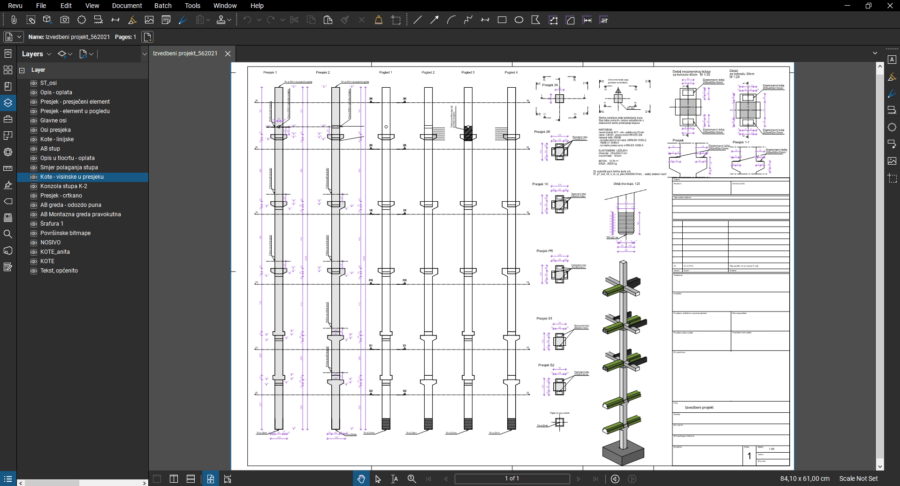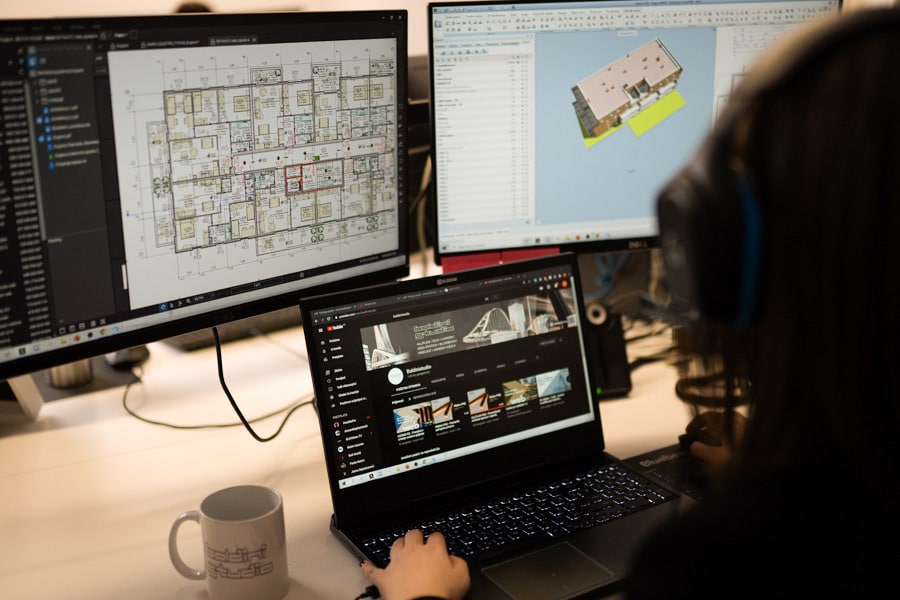Construction projects can be enormous, multimillion-dollar affairs, employing hundreds, sometimes thousands of workers and taking years to complete using a large amount of resources. They can also be less grand in scale, built on a budget by a small team of specialists.
In either case, such projects start life as an idea, then a design and then a drawing representing what is being planned.
We asked Monika Mlakić, a Bluebeam Gold Partner at Baldini Studios in Croatia, for her views on how to interpret engineering drawings, their value throughout the life of a construction project and the difference using Bluebeam Revu makes to the whole process of reading and interpreting engineering drawings. Edited excerpts follow.

Built Blog: What are engineering drawings?
Mlakić: Engineering drawings—also known as construction drawings—are a set of representations of a construction project, providing a graphic outline of how an asset will be built.
They are used in each phase of the project’s development, starting with applying for planning permission from the local authority, by the contractor in the building phase, right through to the handover to the client. Engineering drawings have a legal significance and are one of the most important parts of the agreement between the employer and the contractor.
They must be concise, accurate and coordinated so the engineering drawings can be interpreted correctly and confusion can be avoided. To achieve this, it is necessary to properly manage the drafts.
Built Blog: Why use drawings and not a 3D model to help interpret them?
Mlakić: Before computer-aided design (CAD) was introduced, construction drawings were prepared by hand. Today, a designer can prepare all necessary engineering drawings using different advanced software solutions.
More recently, the use of building information modelling (BIM) and related software has become an essential tool to be used in the design phase. Thanks to BIM software, designers can now automate the process of creating engineering drawings using the BIM model.
Yet while the 3D model developed in such software is useful for visualisation and a better understanding of space, for each stage following the initial design, contractors need to be provided with 2D drawings.
Every construction site uses 2D drawings and often the local legal regime will require them to be on hand, even in countries where BIM Level 2 is achieved.
Built Blog: What are the basic components of an engineer’s drawings?
Mlakić: A complete set of construction drawings must contain floor plans, elevations, sections and detailed drawings for each construction discipline (architecture, construction, analysis, mechanical/electrical/plumbing engineering, etc.).
Every construction drawing must have a label with information such as scale, date, responsible person, name of the asset, revision, additional description and space for signature and stamps.
Every drawn element has its types of lines and hatching, which determines the class of a given element. The thickness, colour and hatch of lines used is vitally important, in order that those working onsite have a clear vision of the build requirements.
One of the most important components of every drawing are its dimensions. Without them, in most cases, the drawing is not fit for purpose. Every inch of the element has to have dimensions provided. If some of the elements are too complex, they usually are drawn separately and with more detail added.
It is very important that the construction drawing is easy to read and very clear, in order that the construction worker knows how to interpret it and then build it, what material to use and be able to understand what is required, without having to go back to the architect or contracting manager with questions, hence avoiding delays.

Built Blog: How does using Bluebeam Revu make it easier for engineers to read drawings?
Mlakić: Thanks to Bluebeam Revu, engineers don’t have to print out their drawings over and over again. Instead, they have everything available digitally. This not only saves time and resources; it also means a project can be accurately delivered throughout all the stages of construction.
Using Bluebeam Revu means anyone can do markups directly onto 2D drawings, export summaries automatically with the help of the markups list, add pictures from the site, hand over tasks to colleagues and—crucially—deliver their projects within budget and on time. The construction sector is one of the least digitised industries in the world, and productivity is lower than it could be. Using Revu we are changing that story.
Built Blog: What workflows does it help engineers improve?
Mlakić: If we analyse each construction stage, we can see the benefits of using Revu in all of them. In the design phase and pre-construction phase—during which designers design each part of the asset and project managers collect permits—Bluebeam is a great solution for document and drawing management, quantity takeoff, automated estimation with the Visual Search tool and comparing documents and revisions with the overlay page and other tasks.
Thanks to Studio in Revu, participants can access all documents in one centralised location and everyone on the project knows which version is the most recent.
When the construction phase begins, Bluebeam is used onsite for better communication between the design office and the site itself. During this phase, construction engineers are mostly using markups for communication with other participants and the Studio Sessions facility for a live review of documents.
For the handover and operational phase, thanks to Revu, building operators have all the necessary documentation in one place and the facility management team can continue to manage the asset with all of information tracked and supplied in Revu. Hyperlinking and Bookmarks allow us to produce the handover documents in a format that is easier to navigate for the investor.
Built Blog: What are the top features in Revu for engineers?
Mlakić: In our experience, the key Bluebeam features for engineers are:
- Document management in the thumbnail panel
- Markups for clearer communication with other participants
- Creating simple sketches as a supplement to the documentation
- Document comparison with several revision drawings
- Taking measurements from a PDF file
Built Blog: How can an engineer try Bluebeam Revu to experience the benefits?
Mlakić: With a 30-day trial of Revu, everyone can experience the benefits of Bluebeam. But I must warn you: Once you try Revu, your job will be unimaginable without it.











